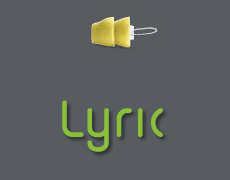A disruptive innovation is an innovation that helps to create a new market. Sometimes it will also disrupt an existing market, displacing an earlier technology. The term is used in business and technology to describe innovations that improve a product or service in ways that the market doesn’t anticipate, typically by first reaching a different set of consumers and later by lowering prices. Mass-produced cars ousted the horse and carriage. Car makers, of course, didn’t create travelers but the horseless carriage changed the way people moved forever. Another very illustrative example is the evolution of records to tapes to CDs to the really disruptive innovations: the iPod and iTunes.
In contrast to disruptive innovation, a sustaining innovation doesn’t create new markets but rather modifies existing ones, allowing other innovators to compete against each others’ sustaining improvements. Think Cheerios to Honey Nut Cheerios. The evolution of the original Cheerios appealed to both the sweet tooth of kids and the health-consciousness of the parent.
Lyric by InSound Medical (and now Phonak)

Phonak Lyric
The inventors and developers of Lyric, the only extended-wear hearing aid on the market, have referred to their product as a disruptive innovation. InSound Medical, a San Francisco Bay area start-up, designed and originally manufactured the device before selling it to Sonova in 2010. The product was put under the umbrella of Phonak and is now referred to as Phonak Lyric. In order to be true to the definition of “disruptive innovation,” the hearing aid market will have to grow beyond our dismal 20%-25% penetration rate and/or Lyric will have to take a significant share of the traditional hearing aid market.
But, Does it Work?
Our practice has been offering Lyric since February 2008. When we began , my first concern was, “Sure, the hassle-free, invisible nature of the devices will be appealing, but will people hear as well?” To illustrate just how we became believers, let me introduce two of our patients. Both are men in their 60s and both were born with hearing loss. One is a practicing dentist and the other a retired physician. They have both worn hearing aids all of their lives and their wives met them as hearing-impaired men. When BOTH these women told us that they had never known their husbands to hear better than they did with their new hearing aids, my original concern was laid to rest.
As often happens in an audiology office, a white-knuckled, resistant patient entered the reception area. He was not the least bit happy about pursuing hearing care, but his hearing loss was affecting his work and could no longer be ignored. He had heard of Lyric and that is what he was looking for. While I recommended two devices, he would accept only one. This practicing attorney in his mid-50s was concerned that the device might be noticed by…..his barber! He has since resubscribed for his second year, the white knuckles are gone, and he would tell you that he loves his Lyric.
Other Challenges
This is not to make light of some of the issues surrounding these devices. There are many patients who would love to wear them but they are contraindicated for general health or ear canal size reasons. A 25% smaller version of the product is being introduced that will directly address the related issues of size and wearing comfort.
Our office has sometimes gotten push back on the pricing strategy, but some consumers like Lyric’s unique business model, which ensures that they will automatically receive technology upgrades and full-service support. Some patients also prefer making an annual decision rather than outlaying more cash and being locked into devices for 3 or more years. Hearing care professionals tend to like the built-in “relationship” aspect of a disposable and replaceable device, as well as the recurring revenue stream.
There have been issues recently with the product’s availability. This has serious implications in terms of our promise to our patients. It also reveals that Lyric is still having growing pains. These problems are affecting its impact in the hearing care space, but we still would not want to be without it in our practice. Wearers are generally willing to accept the inconveniences often associated with being an early adopter. In fact, some of our happiest patients are Lyric users.
Disruptive or Sustainable?
Has the market grown? Has Lyric taken market share away from traditional hearing aids? No significant changes have been documented yet, and perhaps it’s too soon to tell. Frankly, our Lyric patients don’t care about disrupting the hearing care field, although they care very much about the sustainability of Lyric!







As one of the test sites for the new, second generation Lyric, I am happy to report that the new Lyric really is smaller and much more comfortable for most people. Some of our patients who were waiting for the extra small found that it was actually too small for them! The new small size is so small that it fits more ears too. I know how many of your patients have been waiting so long for this product. They won’t be disappointed!
Thanks Sunni, for sharing your experience……I’m not surprised but it’s great to hear!